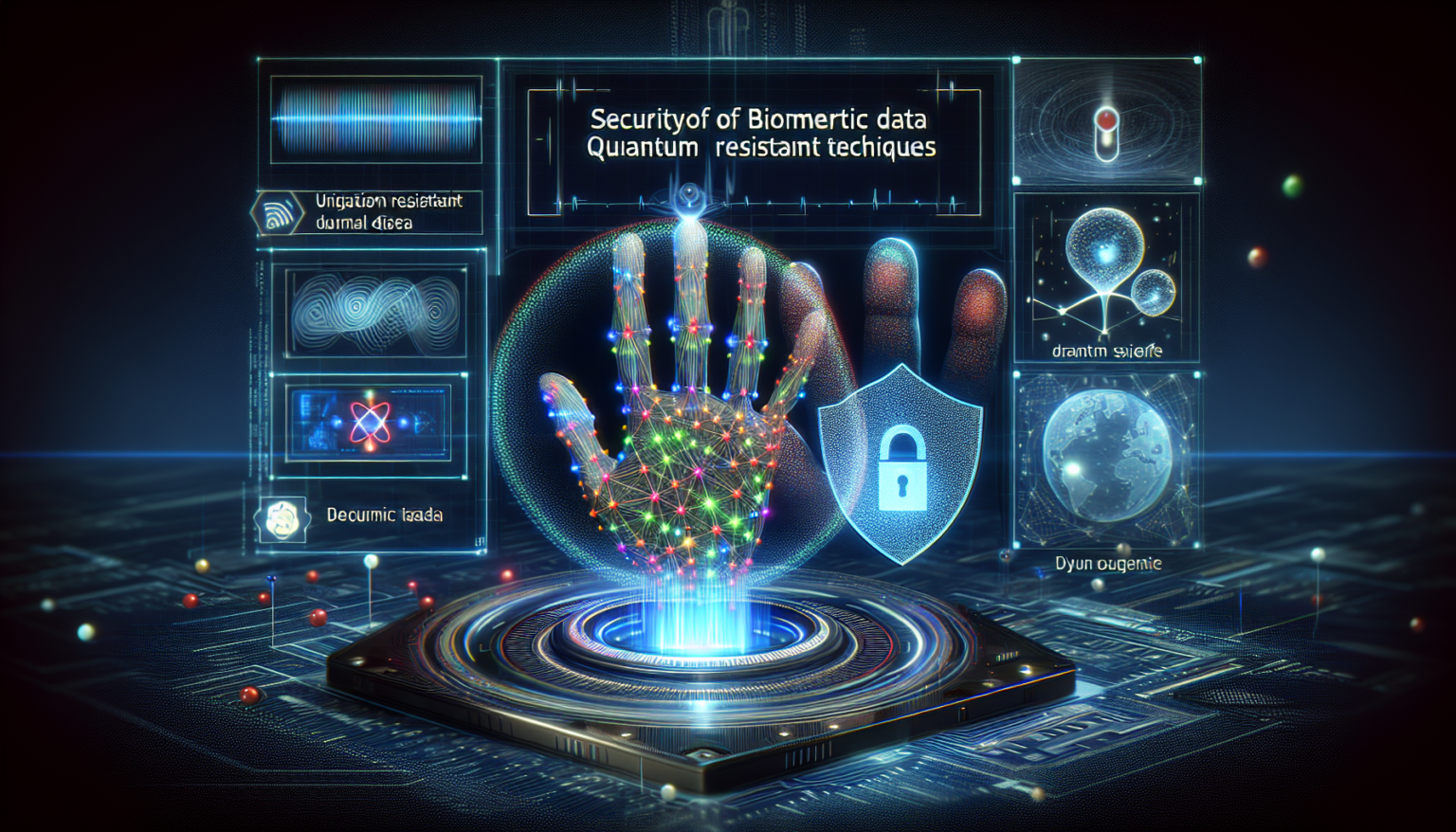The Importance of Biometric Data Security
What is Biometric Data?
Biometric data refers to unique physical characteristics that can be used to identify individuals. This includes fingerprints, facial recognition, iris scans, and even voice patterns. As society increasingly shifts towards biometric systems for identity verification—ranging from unlocking phones to securing banking transactions—the need to protect this sensitive data becomes paramount.
Why Biometrics Are Vulnerable
Despite their robustness, biometric systems are not immune to attacks. Unlike passwords or PINs, which can be reset, biometric data is immutable. If compromised, it cannot be changed, exposing individuals to long-term risks. Cybercriminals have various techniques to steal biometric data, such as spoofing, where they replicate biometric traits, or through data breaches where databases are hacked.
The Rise of Quantum Computing
Understanding Quantum Computing
Quantum computing represents a significant leap in computational power. Unlike classical computers, which use bits as the smallest form of data, quantum computers use qubits. This allows them to perform multiple calculations simultaneously. The implications for cybersecurity are enormous, particularly concerning encryption methods.
The Threat of Quantum Attacks
Current encryption standards, including those protecting biometric data, could be rendered insecure by quantum computing. Algorithms like RSA and ECC could be cracked by a sufficiently powerful quantum computer. This poses a serious threat, as it could lead to widespread breaches of biometric systems.
Quantum Resistance Techniques for Biometric Data
What Are Quantum Resistance Techniques?
Quantum resistance techniques are methods designed to secure data against vulnerabilities posed by quantum computing. They aim to employ cryptographic algorithms that remain secure even in the face of quantum attacks. Introducing these techniques into biometric data security is essential for future-proofing these systems.
Post-Quantum Cryptography (PQC)
Definition and Importance
Post-quantum cryptography refers to cryptographic algorithms that are secure against the potential threats posed by quantum computers. They rely on mathematical problems that are believed to be hard for quantum computers to solve, such as lattice-based problems, hash-based signatures, and multivariate polynomial equations. This makes them suitable for securing biometric data.
Implementation Challenges
While PQC offers a promising avenue, its implementation in existing systems poses several challenges. Transitioning from current systems to PQC will require significant resources, both in terms of time and technology. Compatibility with existing biometric systems and ensuring user-friendliness are some considerations developers need to address.
Combining Biometrics with Blockchain Technology
Using Distributed Ledger for Enhanced Security
Blockchain technology provides a decentralized method of securing data. By combining biometric data with blockchain, organizations can ensure that the data is immutable and tamper-proof. Each biometric reading can be hashed and added to a blockchain, making it exceptionally difficult for attackers to manipulate.
Smart Contracts for Identity Verification
Smart contracts can facilitate biometric authentication processes. They can automate the verification process based on pre-defined criteria, making it harder for unauthorized access. Moreover, since blockchain operates on a distributed network, even if part of the system is compromised, the integrity of the data remains largely intact.
Data Masking Techniques
Anonymizing Biometric Data
Data masking involves obscuring biometric data to protect users’ identities while still allowing for authentication. Techniques such as hashing can be employed to create a reference that can be used for verification but cannot easily be reversed to extract original biometric traits.
One-Way Functions
One-way functions are algorithms that produce a unique output from a given input but are computationally infeasible to reverse. By applying one-way functions to biometric data, it is possible to create secure, irreversible representations, making it challenging for attackers to retrieve the original biometrics.
Challenges in Securing Biometric Data
User Awareness and Education
One major challenge in securing biometric data is ensuring user awareness about potential risks. Many users may not grasp the implications of having their biometric information stored and shared. Educating users about the importance of security measures and how to protect their data is essential for a more secure future.
Regulatory and Compliance Issues
Governments and regulatory bodies are increasingly focused on data protection, especially concerning sensitive data like biometrics. Organizations must navigate complex legislative landscapes to ensure compliance. This includes adhering to regulations such as the GDPR in Europe, which lays out strict guidelines for data processing and user consent.
Technological Barriers
The integration of quantum-resistant techniques with existing biometric systems is not straightforward. Many current systems were not designed with future threats in mind, presenting significant barriers to upgrades. Organizations may face resistance to adopting new technologies due to cost considerations or the desire to stick with established systems.
The Future of Biometric Data Security
Advances in Quantum-Resistant Algorithms
As research into quantum-resistant algorithms continues to evolve, we can anticipate the development of more efficient and effective methods for securing biometric data. Research institutions are actively working to create solutions that not only withstand quantum attacks but are also operationally feasible.
Collaborative Approaches to Security
The complexity of securing biometric data in a quantum future will require collaboration among industry leaders, academic researchers, and regulatory bodies. Joint efforts can foster innovation and create comprehensive solutions that cover the multifaceted challenges of biometric security in the quantum age.
Encouraging Ethical Practices
The ethical implications of biometric data use cannot be overstated. As new technologies emerge, there is a pressing need for ethical guidelines that dictate how biometric data can be collected, stored, and used. Establishing these guidelines will help build trust among users, which is essential for the widespread acceptance of biometric systems.
Promoting Responsible Use
Finally, it’s crucial to promote responsible use of biometric data. This includes implementing transparent data policies and allowing users the right to control their personal information. Empowering individuals in their data security journey is a vital step toward a more secure biometric landscape.
In addressing these various facets, organizations and individuals can contribute to a safer future where biometric data is both a convenient and secure method for identity verification.








